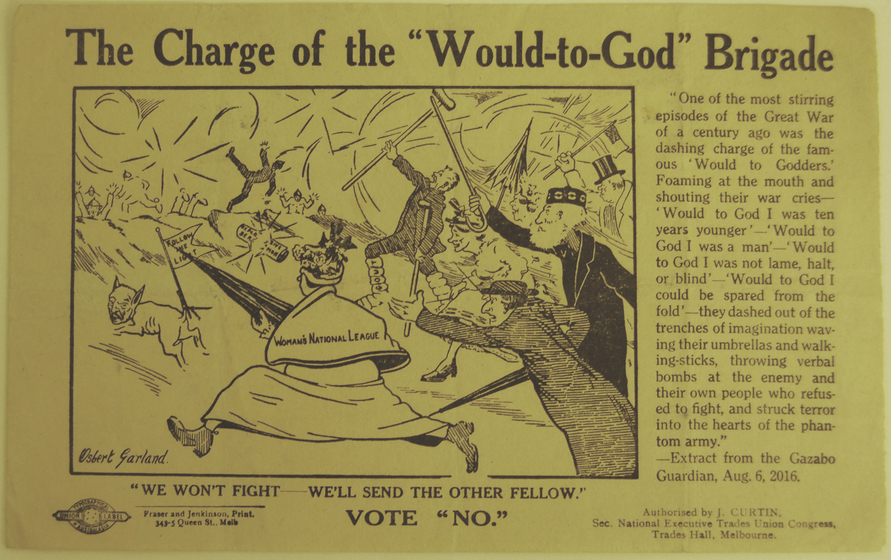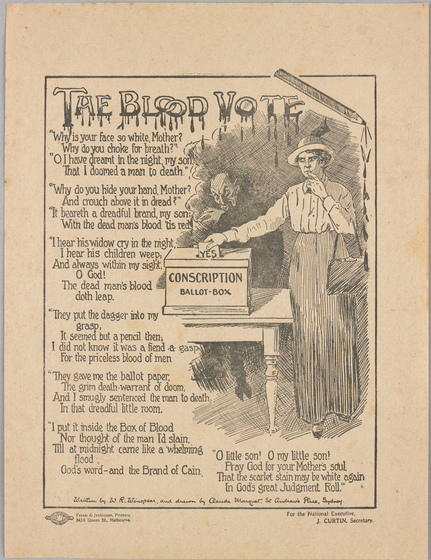The Trade Unions' Anti-Conscription Campaign
Trade Unions were amongst the most organisationally powerful opponents to conscription. The Victorian Trades Hall was especially important for its national role in the campaign.
Organisation within the Trade Union movement was critical for developing opposition to conscription within the parliamentary Labor Party. At this time, the ALP was still regarded by most people as an extension of the Trade Unions. As a result, decisions of the Trade Unions’ Councils and conferences had an enormous influence on government policy. Although the Labor ministries led by Andrew Fisher and Billy Hughes were dominated by politicians determined to prosecute the war to its fullest, many ALP backbenchers, members and trade unionists had a more sceptical view of the war and especially of conscription.
The Trade Unions were also able to use their organisational capacity to lead a national campaign against conscription for overseas service. In May 1916 the All-Australia Trade Union Conference in Melbourne voted overwhelmingly to oppose any attempts to introduce conscription, and shortly afterwards the Trades Union Anti-Conscription Campaign Committee was formed. John Curtin would serve this Committee as national Secretary, and fulltime organiser. Frank Anstey and Frank Hyett were also involved.
Despite this capacity, trade unions faced a difficult environment for campaigning. Almost all of the major newspapers were in favour of conscription, the Victorian state government (like all state governments except Queensland) were pro-conscription, and the federal government instituted stringent censorship and surveillance of anti-conscriptionists. As a consequence, handbills and pamphlets were a major campaign tool for the trades unions. These were printed in bulk on cheap paper, and distributed in workplaces and local communities.















